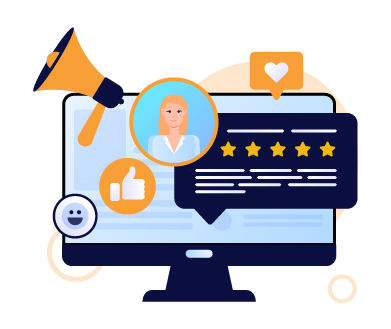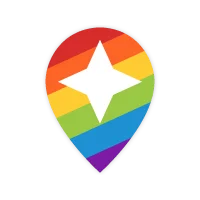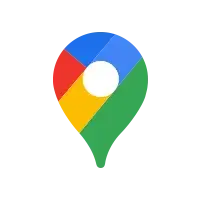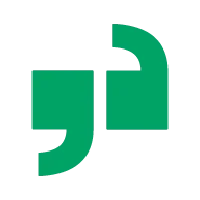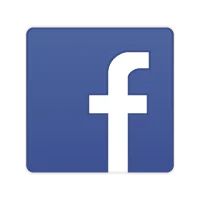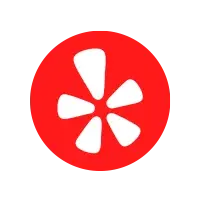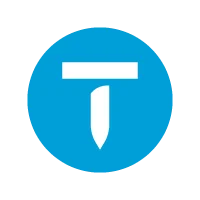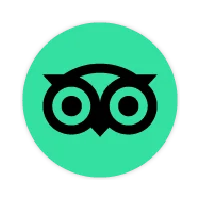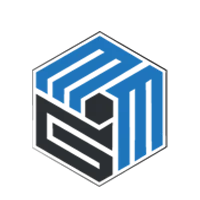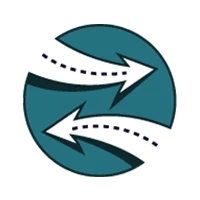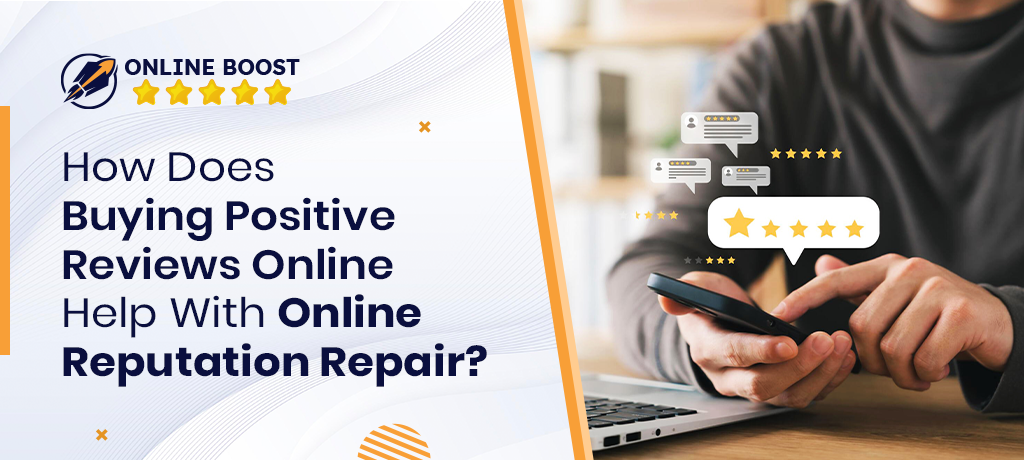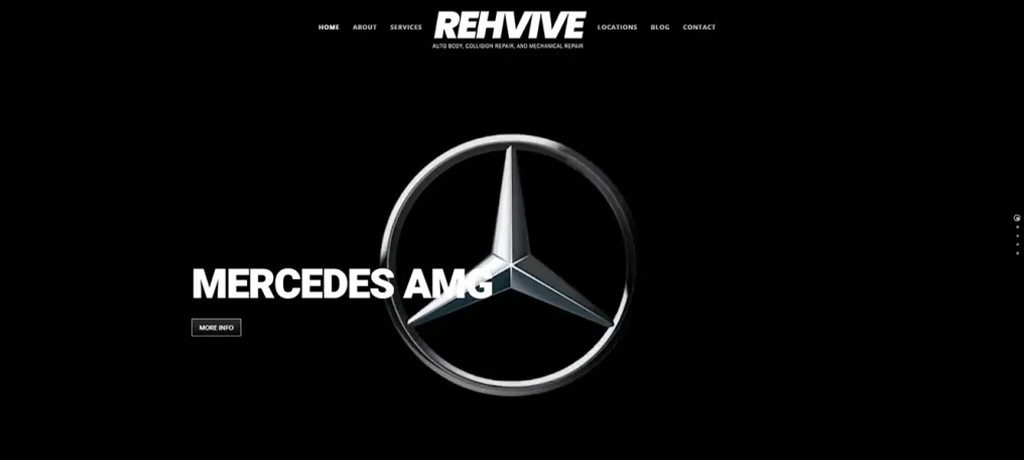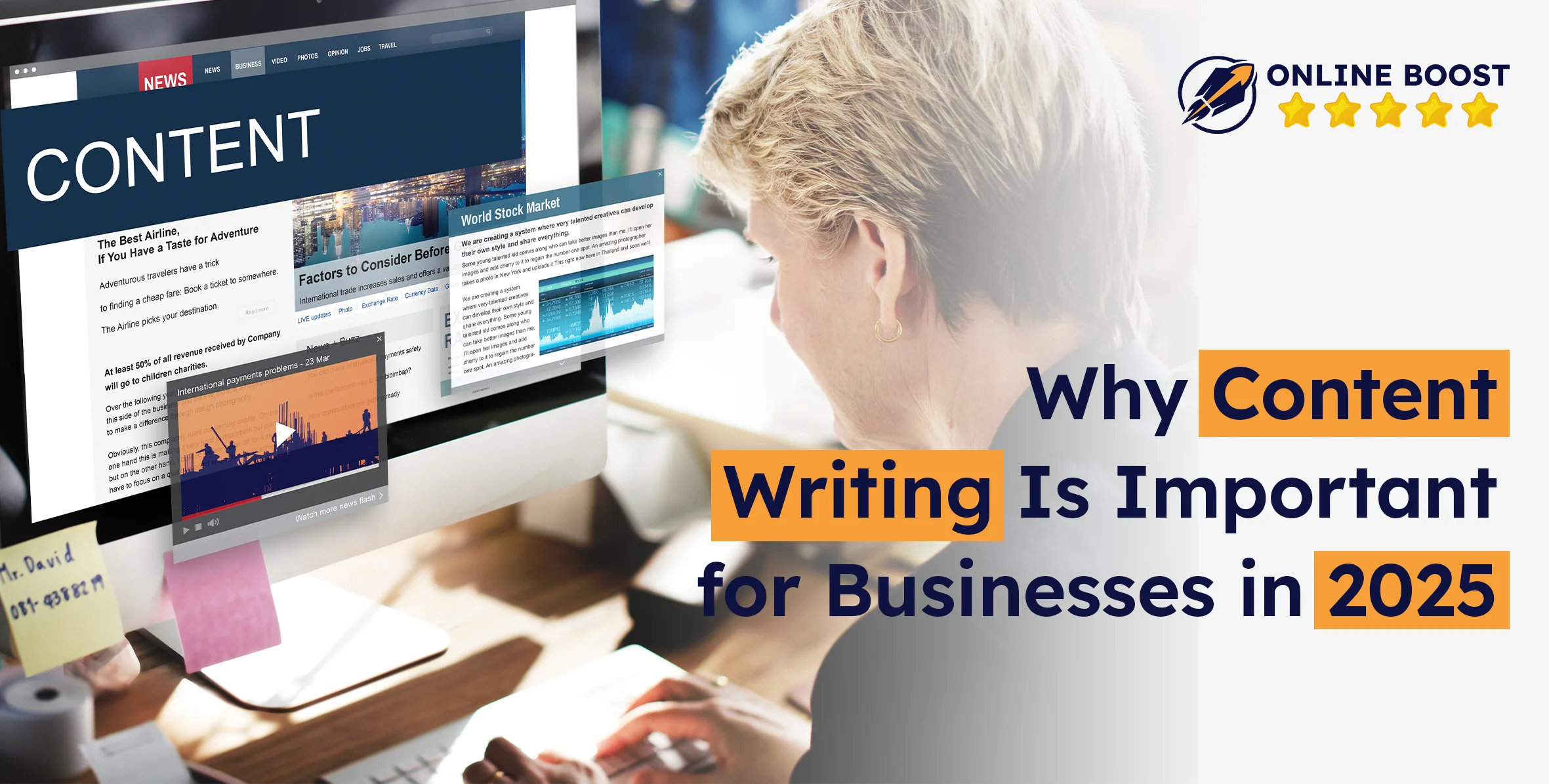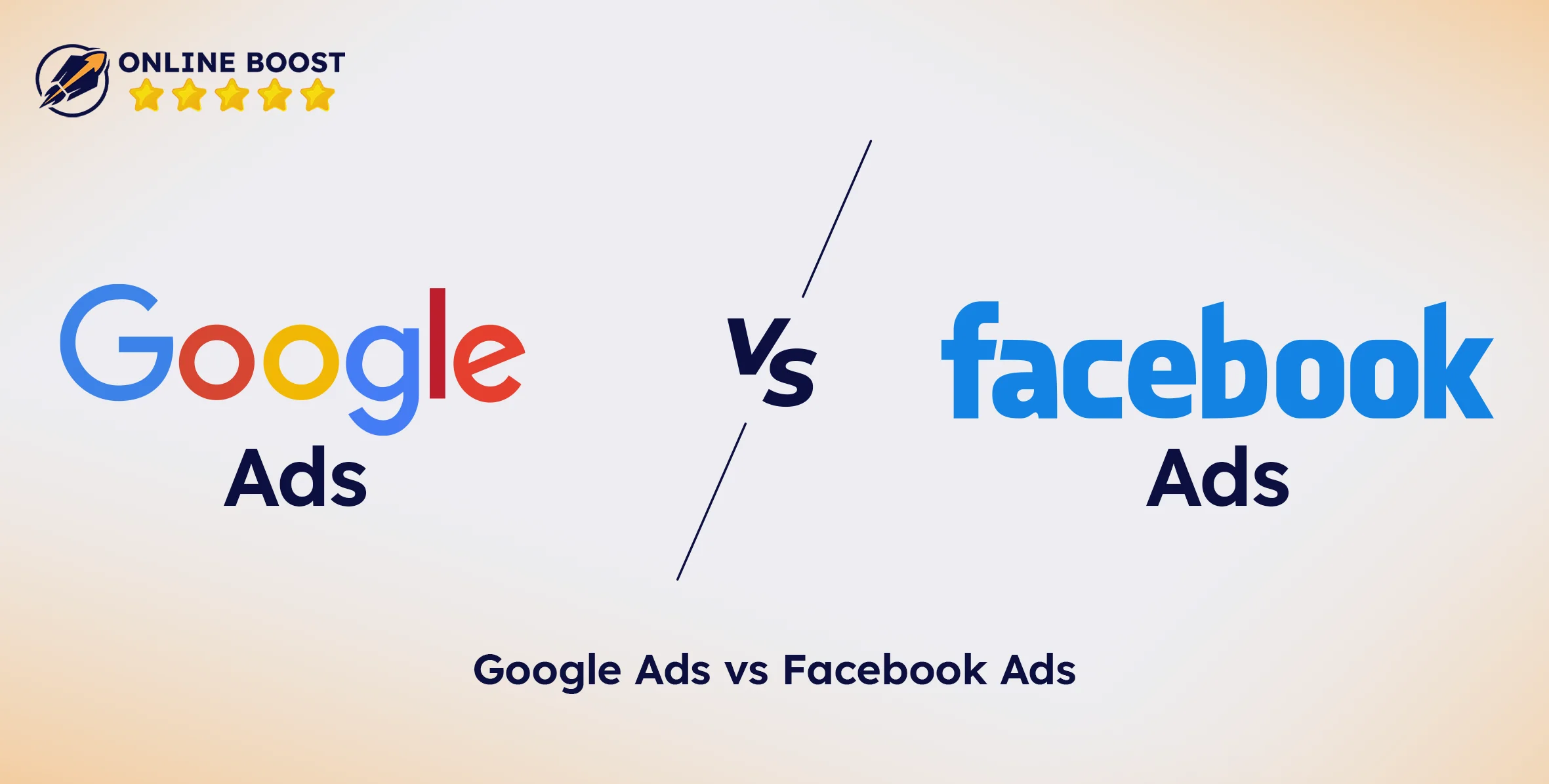
In the world of advertising, the one who understands attention wins.
If you’ve ever felt torn between Google Ads vs Facebook Ads, you’re not alone. Every marketer, small business owner, or startup founder faces this same crossroads: Which paid ads platform actually delivers results?
It’s a question that’s not just about cost or clicks, but about human behavior, where your audience’s attention lives and how they make decisions in 2025.
According to Statista, U.S. businesses spent over $300 billion on digital advertising in the previous year, and that number is expected to climb another 15% in the coming years.
Choosing the best paid ads strategy today isn’t optional; it’s survival. And the real challenge is that both Google and Facebook promise growth, but they do it in completely different ways.
Google Ads connects you with people who are searching for something right now: “best marketing agency near me,” “affordable CRM software,” “eco-friendly sneakers.” These are buyers with intent.
On the other hand, Facebook Ads (now part of Meta) puts your brand in front of people scrolling through their feeds; not necessarily looking to buy, but open to discovering something new.
If you run a small business or manage a marketing budget, you must want to know:
“Which platform is cheaper?”
“Where will my audience respond best?”
Let's answer all your questions so you can confidently decide which platform actually deserves your money in 2025.
Understand the Two Platforms
Before we even talk about which one is better, let’s understand how both of these platforms work. Once you get that part, choosing where to spend your money starts to make a lot more sense.
What Is Google Ads?
Google Ads is Google’s advertising platform that lets you show ads to people who are already searching for something specific. When someone types a word or phrase into Google, your ad can appear above or below the search results. These ads also show on YouTube, Gmail, and millions of websites that are part of Google’s Display Network.
It is one of the most powerful forms of pay-per-click advertising because you only pay when someone actually clicks your ad.
What Is Facebook Ads (Meta Ads)?
Facebook Ads, also known as Meta Ads, work differently. Instead of waiting for someone to search, Facebook shows your ad while people are scrolling through their feed, watching stories, or checking updates. These ads appear on Facebook, Instagram, Messenger, and the Audience Network.
The strength of Facebook is its ability to target users based on interests, behavior, age, location, and even what kind of content they interact with. It helps businesses reach the right people even before they start searching for a product.
Core Purpose of Each Platform
The core difference between the two platforms is simple.
- Google Ads captures demand while Facebook Ads creates demand.
- Google Ads helps you reach people who already know what they want.
Facebook Ads helps you reach people who might not know they need your product yet.
Google works best when the customer is ready to act, while Facebook works best when you want to inspire interest and build relationships with potential customers.
Many successful businesses use them together: Facebook to attract attention and Google to convert that attention into action.
Key Differences Between Google Ads and Facebook Ads
| Aspect | Google Ads | Facebook Ads (Meta Ads) |
|---|---|---|
|
Main Purpose |
Reaches people who are already searching for something specific |
Reaches people who might be interested based on their interests or behavior |
|
Ad Type |
Text-based ads on Search, Display, YouTube, and more |
Image, video, carousel, and story ads on Facebook, Instagram, and Messenger |
|
Audience Targeting |
Uses keywords, search intent, and browsing behavior |
Uses interests, demographics, behaviors, and lookalike audiences |
|
User Intent |
High intent – users are actively looking to buy or act |
Low to medium intent – users are casually browsing |
|
Cost Structure |
Usually higher cost per click, but higher conversion potential |
Usually lower cost per click, but may take longer to convert |
|
Best For |
Businesses wanting direct leads or sales quickly |
Brands looking to build awareness, reach, or engagement |
|
Creative Focus |
Relies on keywords, headlines, and ad copy |
Relies on visuals, storytelling, and audience emotion |
|
Data and Tracking |
Tracks performance through keywords and search data |
Tracks engagement, interests, and audience behavior |
|
Learning Curve |
More technical setup and optimization are required |
Easier to start, but needs creative testing |
|
Conversion Speed |
Often faster because of strong purchase intent |
Slower but builds brand familiarity over time |
Cost Comparison
Average CPC and CPM on Google Ads
These costs matter because they affect how much you’ll spend for clicks, impressions, and ultimately conversions when you run your paid advertising.
Here are key benchmarks for Google Ads in 2025:
- The average cost-per‐click (CPC) across all industries is about $5.26.
- For search campaigns, one source reports average CPC at $4.22.
- The average cost‐per‐thousand‐impressions (CPM) is around $18.75 in April 2025 for US advertisers.
- A narrower look at the Display network shows very low CPM – one figure, ~ $3.12 for some industries.
Google Ads Cost Benchmarks (2025)
| Metric | Average Value | Notes |
|---|---|---|
|
CPC (All industries) |
~$5.26 |
Benchmark across many industries |
|
CPC (Search campaigns) |
~$4.22 |
Lower than the all-industry average by some sources |
|
CPM (April 2025) |
~$18.75 |
Median in US market |
|
CPM (Display Network) |
~$3.12 |
Low end for certain display campaigns |
Average CPC and CPM on Facebook Ads
Here are key benchmarks for Facebook Ads in 2025:
- One source shows the average CPC across US industries is about $1.38 in 2025 (down from $1.72).
- Average CPM for Facebook (US) ranges from $5 to $18, depending on industry and objective.
- For example, the CPM for B2B SaaS was ~$10.23 in 2025.
- Another data point shows the CPM for Meta across the US at ~$8.70.
Facebook Ads Cost Benchmarks (2025)
| Metric | Average Value | Notes |
|---|---|---|
|
CPC (All industries USA) |
~$1.38 |
Benchmark for US advertisers |
|
CPM (Range across industries) |
~$5 - $18 |
Depending on the objective & industry |
|
CPM (B2B SaaS April 2025) |
~$10.23 |
More specific to one industry |
Factors That Affect Ad Costs
Now that we have the costs, let’s look at what actually affects them. These are the factors you can control when running your ads.
- Competition and industry niche: If you are in a high-competition industry (legal, finance, insurance), CPCs tend to be much higher.
- Targeting and audience size: High-intent audiences cost more per click or impression because you’re reaching fewer people but more relevant ones.
- Ad quality and relevance: On Google, if your Quality Score is strong (relevant keywords, good landing page, optimized ad), your CPCs can be lower. On Facebook, higher engagement (likes, shares, comments) improves relevance and lowers cost.
- Ad format and placement: Videos tend to cost more. For Google, Search ads cost more than Display typically. For Facebook, feed placements, stories, and the audience network have varying costs.
- Objective of campaign: Awareness, traffic, and conversions all cost differently. Focusing on conversions usually costs more than just targeting traffic or impressions.
Which Platform Offers Better ROI?
When people ask, “Google Ads vs Facebook Ads”, ROI is often the decisive factor.
Here are observations from the data we gathered:
- On Google, because you're capturing users who are actively searching (high intent), your conversion rates tend to be higher. For example, across industries, the average conversion rate on Google Ads in 2025 is about 7.52%.
- On Facebook, the cost per click or impression is lower, but users may not yet be in “buy now” mode. That means you might pay less upfront.
- If your business goal is immediate leads or sales (someone ready to act), Google usually yields a faster and clearer ROI.
- If your goal is brand awareness, reach, or introducing your product, Facebook may yield better cost-efficiency but may require a longer horizon and follow-up to convert.
Targeting Capabilities
Let’s talk about how each platform helps you reach people, because in the world of Google Ads vs Facebook Ads, how you find your audience can change everything.
How Google Targets Users
With Google Ads, you’re reaching people when they have something on their mind, something they’re searching for. You pick keywords and match them to what people type into Google.
Then you can target by location, device (mobile or desktop), time of day, and even things like what websites they’ve visited (in the Display Network).
For example, if a user types “best marketing agency," you can show your company's ad (e.g., "Online Boost") right there. That makes the intent very real.
How Facebook Targets Users
On the other hand, Facebook Ads (Meta Ads) are about reaching people before they’re searching. You target by interests, age, location, behavior, and you can use custom audiences (like people who visited your website) or lookalike audiences (people similar to your best customers).
You’re reaching users while they’re browsing, scrolling, or watching videos. So if someone is watching a video, sees a friend’s post, or checks their feed, your ad shows up, and you create interest.
Which Targeting Works Best for Different Goals
If your goal is direct action, someone ready to buy or sign up, Google is the better fit. Because you’re targeting users who already have intent, your campaign can convert faster.
On the other hand, if you’re introducing a brand, building an audience, or reaching people who don’t know you yet, Facebook’s targeting is strong.
So when you’re thinking how to choose between Google Ads and Facebook Ads, remember:
- Use Google when the user has intent and is close to converting.
- Use Facebook when you’re building awareness, interest, or long-term brand value.
Ad Formats and Creative Options
So now that you know what each platform does and how they find people, let’s discuss how you actually show up. Because choosing the right format is just as important as choosing the right platform.
Google Ads Formats
When you use Google Ads, you’ll find a variety of formats depending on your campaign goal.
Here are some of the main ones:
- Search ads: text that appears when someone searches for your keywords.
- Display/image ads: banners or images that show on websites, apps in Google’s network.
- Video ads: especially via YouTube or Google’s partner network.
- Shopping/product ads: for e-commerce, showing product images, prices, etc.
- App promotion ads: if your offer is an app, Google supports those too.
Facebook Ads Formats
If you are switching over to Facebook Ads (aka Meta Ads), you’ll find formats built for social engagement, discovery, and visual storytelling.
Some key formats:
- Image/photo ads: simple, clean visuals with a link and a caption.
- Video ads: short clips, vertical videos, stories, reels.
- Carousel ads: multiple images/videos users can swipe through, each linking to different landing pages.
- Collection / Instant Experience ads: more immersive, especially on mobile, letting users browse products inside the ad environment.
- Flexible ad formats: Meta now lets you upload multiple assets (images/videos), and the system optimizes which to show to which user.
Which Ad Formats Drive Better Results
Here’s a simple table to compare formats across platforms and link them to goals:
| Platform | Format Example | Best For |
|---|---|---|
|
Google Ads |
Search text ad |
High intent, conversion (buy now or book now) |
|
Google Ads |
Shopping/product ad |
E-commerce, product sales |
|
Google Ads |
Video (YouTube) |
Brand awareness or tutorial / demo |
|
Facebook Ads |
Image/photo ad |
Quick offers, visual product showcase |
|
Facebook Ads |
Video ad (Stories/Reels) |
Engagement, brand story, mobile audience |
|
Facebook Ads |
Carousel / Collection / Instant Experience |
Showcase multiple products or an immersive experience |
|
Facebook Ads |
Flexible format (multiple assets) |
Testing creative at scale, optimizing on the fly |
Performance and Conversion Insights: Google vs Facebook
How do these advertising giants stack up when it comes to actual performance and conversions?
Here’s a breakdown of the most recent benchmark data for Google Ads and Facebook Ads (or Meta Ads) in 2025:
| Metric | Google Ads | Facebook Ads |
|---|---|---|
|
Average conversion rate (search/intent-based) |
~ 7.52% across industries. |
~ 9.21% average across industries. |
|
Typical click-through rate (CTR) |
~ 6.66% on search ads in 2025. |
~ 1.4% CTR projected for some industries in 2025 (e.g., construction). |
|
Cost per click / cost per action |
Higher CPC due to intent-search competition. |
Lower CPCs are often used in many cases, especially for awareness campaigns. |
|
Performance timing / funnel role |
Strong for bottom-of-funnel (BOFU) actions. |
Strong for top-of-funnel (TOFU) discovery and less-immediate conversions. |
Key conversion insights and strategy tips
- Because Google targets search intent, you’ll often see faster, more direct-response results. If your goal is immediate sales or lead captures, then leaning on Google makes sense.
- With paid advertising on Facebook (or Meta platforms), you should expect to invest in the creative and the audience build. You’re paying to influence behavior rather than capturing it.
- With the changes in privacy, attribution, and cookies, both platforms require you to set up proper conversion tracking (for example, via pixels, first-party data) to measure the true value of each click/interaction.
- Don’t assume one platform is “better” across all situations. The conversion numbers tell a story, but context matters: what you sell, how your funnel is built, what your offer looks like, how you retarget, all these affect performance.
Our Recommendation
Here is what we recommend:
- For direct conversion goals: Start with Google, because you’ll reach people ready to buy, ready to act.
- For brand building, interest generation, or retargeting people who visited but didn’t convert: Use Facebook.
- Then tie both together: Use Facebook to warm up your audience, then retarget or capture with Google when they search.
- Always track and test. See which channel gives you the better cost per acquisition (CPA), and double down.
When to Use Google Ads
When does it make sense to go for Google Ads?
- If your business is ready for action, and you want to capture people who are already looking for what you offer.
- If your goal is immediate leads or sales, not just brand awareness.
- If you have a product, service or promotion that’s time‐sensitive (a limited-time sale, seasonal offer, new launch) and you don’t want to wait months for results.
- If you're a local business or service provider, you want someone in your city to buy now.
- If you already know your keywords, your landing page works well, you have a budget, and you measure performance.
Pros and Cons of Google Ads
| Pros | Cons |
|---|---|
|
Reaches users with high search intent, ready to take action |
Can be expensive in competitive industries |
|
Works on a pay-per-click (PPC) model |
Needs constant optimization and active management |
|
Delivers fast and measurable results |
Poor landing pages or weak offers can waste ad spend |
|
Offers precise targeting (keywords, location, device, schedule) |
Costs can increase over time due to high competition |
|
Scalable — start small and grow with results |
Not ideal for long sales cycles or pure brand awareness |
When to Use Facebook Ads
Here’s when they make the most sense:
- If you want to build awareness, introduce your brand or a new product.
- If your business benefits from engaging visuals, lifestyle imagery or storytelling.
- If you want to reach people based on interests, behaviors, demographics.
- If you have an audience profile (age, location, hobby), and you want to uncover new customers.
- If you’re running paid advertising and want to nurture leads, retarget people who visited your site, or build an audience for future sales.
- If your product/service fits well in a visual platform, you can test creative assets to see what resonates.
Pros and Cons
| Pros | Cons |
|---|---|
|
Reaches large audiences & new prospects before they search |
Can deliver clicks that don’t convert because intent may be lower |
|
Very good targeting based on interests, behaviors and demographics |
Cost and competition have increased |
|
Supports rich formats (videos, carousels, stories), which can boost engagement |
Requires strong creativity and testing to stand out |
|
Great for retargeting and nurturing leads in your funnel |
Tracking/attribution has become more complex after privacy changes |
|
Flexible budget; can start small and experiment |
Time- and resource-intensive to optimize campaigns. |
How to Combine Google Ads and Facebook Ads Strategically
Let’s talk about a strategy that uses both platforms together, so your paid advertising works smarter and covers more of your customer’s journey.
It is not about picking one over the other; it is about using each where it plays best.
Why you should use both
When you combine both, you cover both sides: people who know they want something, and people who might want something once they see it.
For example, Someone sees your brand on Facebook, then later they type their search on Google, and you are ready there. Or someone finds you on Google but doesn’t buy yet, you retarget them on Facebook and bring them back.
How to set this up in three steps
- Define your funnel stages: awareness, interest, decision, conversion. Use Facebook more for awareness and interest. Use Google more for decision and conversion.
- Align your messaging and creative. On Facebook: use visuals, stories, engage. On Google: use search-intent keywords, clear calls to action.
- Track performance and shift budget. Start with a reasonable split, measure cost per lead, cost per sale, and move more budget to the platform that gives better results for your business.
Ideal Budget Split Examples
There is no one-size-fits-all split, but here are some sample allocations you can use as starting points.
| Business Scenario | Starting Budget Split | Why this split works |
|---|---|---|
|
You want fast sales, and you have a strong search demand |
70% Google / 30% Facebook |
Focus more on search intent, use Facebook to warm up and retarget. |
|
You are launching a new product or want brand awareness |
60% Facebook / 40% Google |
Facebook builds interest, Google catches those ready to act. |
|
You are an e-commerce store combining discovery + conversion |
50% Google / 50% Facebook |
Balanced approach: both discovery and purchase phases are evenly supported. |
Recommendations by Business Type
| If your business is... | Use this platform |
|---|---|
|
E-commerce brand |
Both, but start with Facebook Ads for awareness and Google Ads for conversions |
|
Local service (plumber, salon, repair) |
Google Ads |
|
B2B company |
Google Ads, with Facebook Ads for remarketing |
|
Startup or new brand |
Facebook Ads |
|
Online course or coaching |
Facebook Ads |
|
Real estate or property |
Facebook Ads |
|
Seasonal or promotional store |
Google Ads |


